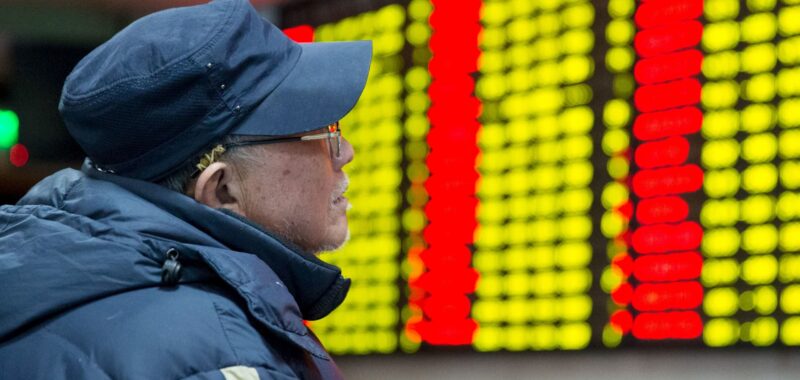China’s surging stock market after the government outlined plans to boost the economy has suddenly tipped hedge funds and strategists to what would have recently been seen as one of the most contrarian trades around. The CSI 300, an index of stocks traded in Shanghai and Shenzhen, rallied more than 15% last week, its best week since 2008 . Earlier this year, the CSI 300 fell to six-year-lows. “There is no question that shares of quality businesses will bottom well ahead of final index bottoms,” a team led by JPMorgan chief China equity strategist Wendy Liu wrote in a report Friday. Until the government’s measures pan out, investment strategists are recommending a handful of oversold stocks in China. JPMorgan highlighted three stock picks for near-term upside: Shanghai-listed beer company Tsingtao , U.S.-listed retailer Miniso and machinery company Zhejiang Dingli, also traded in Shanghai. “Our focus here and over the next several quarters will be on finding quality businesses that trade at undemanding valuation[s],” the report said. Adding exposure That newfound enthusiasm was contagious. “We believe it is a good time to add back China exposure,” Rupal Agarwal, director, Asia quantitative strategist at Bernstein, said in a note Friday. “We would wait to see clear signs of inflection on property/consumer sentiment and earnings growth to become more positive over the medium-term,” she said. “For now, we believe tactically, the rally has legs.” Two stocks Bernstein analysts found that have triple-digit six-month earnings momentum are U.S.-listed after-school operator Tal Education and Shanghai-listed Seres , which manufactures cars for the Aito EV brand developed with Huawei. The stocks appeared on a screen searching for beneficiaries of domestic demand that was confined to companies trading at least 20% below peak levels reached in May and with positive 12-month earnings forecasts. U.S. hedge fund billionaire David Tepper said Thursday on CNBC’s ” Squawk Box ” that he bought more Chinese stocks after the change in China policy. Asked about the potential impact of increased U.S. tariffs, which former President Donald Trump has primised to extend if elected in November, Tepper said he didn’t care. Instead, Tepper stressed how Beijing’s latest policy focuses on “internal stimulus,” and said Chinese stocks are cheaper than those in the U.S. “You’re sitting there with single multiple P/Es with double-digit growth rate s for the big stocks that trade over here,” Tepper said. That’s versus, “you know, the 20-plus on the S & P.” Shifting sentiment Sentiment toward Chinese stocks shifted after the People’s Bank of China (PBOC) Governor Pan Gongsheng on Tuesday announced rate cuts at a rare press conference held alongside the head of securities regulation and other officials. Chinese President Xi Jinping on Thursday then led a high-level meeting that affirmed those policy moves. The leaders also called for a halt in the real estate slump and for strengthening fiscal and monetary policy. In reaction to the brightened prospects, short-term traders have bought Chinese stocks for eight straight days, Scott Rubner, managing director for global markets and tactical specialist at Goldman Sachs, said in a trading note Thursday. “Re-Emerging Markets have quickly become a favored post-U.S. election trade for November and December,” Rubner said, noting, “I have done more Zoom calls on China in the past 48 hours than all of 2024.” Global mutual funds in aggregate allocated 5.1% of their portfolios to Chinese stocks as of the end of August, near the lowest levels of the past decade, while hedge funds were around a five-year low of less than 7%, according to data collected by Goldman. That hedge fund allocation rose to 7.3% on Tuesday, which saw the largest single day purchases by hedge funds since March 2021, Rubner said. The renewed interest in Chinese stocks comes after institutions had cut their exposure there due to sluggish growth prospects, mounting debt woes and an alarming slump in the property market . Some international investors have also steered clear over concerns about U.S.-China tensions. To be sure, few are betting on an unimpeded, all-out rally from here, especially since China hasn’t formalized the details of fiscal policy. Chinese companies trade primarily in the U.S., Hong Kong and the mainland. Retail investors account for the majority of trading activity in mainland Chinese stocks, also known as A shares. “Trading sentiment has always been affected by policies and has fluctuated greatly,” Li Dongfang, a Beijing-based finance blogger, said in Chinese, translated by CNBC. He bought some A shares and Hong Kong-traded exchange traded funds, and is optimistic on liquor, new energy vehicle and photovoltaic stocks. “The A share market has always had a market bottom after the policy” starts to turn supportive, Li said, noting he expects it will take time for the market to consolidate after the latest gains followed earlier losses. The PBOC’s policy announcements support further flows into the stock market, allowing ETFs to be used as collateral for institutional loans, and allowing major shareholders to borrow from banks for stock repurchases, Li said. “Ongoing short squeeze likely further fueled the strong market performance [Friday], with property, consumer staples, and consumer discretionary outperforming in the HK market, and property, consumer staples, and financials outperforming in the A-share market,” JPMorgan said. Mainland Chinese stock exchanges are scheduled to close from Oct. 1 to Oct. 7 for a holiday, which this year commemorates the 75th anniversary of the People’s Republic of China. â CNBC’s Michael Bloom contributed to this report.

